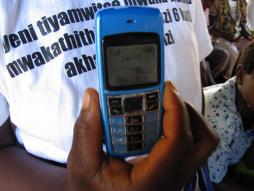At the UN Millennium Summit in September 2000, world leaders adopted the Millennium Declaration, committing nations to a new global partnership to reduce extreme poverty and address pressing challenges of hunger, gender inequality, illiteracy, and disease. The year 2015 has been affirmed as the deadline for reaching these Millennium Development Goal (MDG) targets.
The goal is to show how an integrated approach to community-level development can translate the international MDG agreements into ground-level breakthroughs throughout rural sub-Saharan Africa. Villages are located in deeply impoverished rural areas that were considered hunger hotspots—with at least 20% of children malnourished. Sites were selected to reflect a diversity of agro-ecological zones, representing a range of challenges to income, food production, disease ecology, infrastructure, and health system development.
The Millennium Villages Project is a ten-year initiative spanning two five-year phases. The first phase focuses on achieving quick wins, especially in staple crop production and disease control, and on establishing basic systems for integrated rural development that help communities escape the poverty trap and achieve the MDGs. The Project involves the coordinated community-led delivery of a locally tailored package of scientifically proven interventions for agriculture, education, health, and infrastructure. Over the first five-year phase, interventions are delivered at a modest cost, totaling approximately $120 per capita per year, of which MVP brings about half to complement funds from the host government, the local community, and other partners. The second five-year phase will focus more intensively on commercializing the gains in agriculture and continuing to improve local service delivery systems in a manner that best supports local scale-up.
